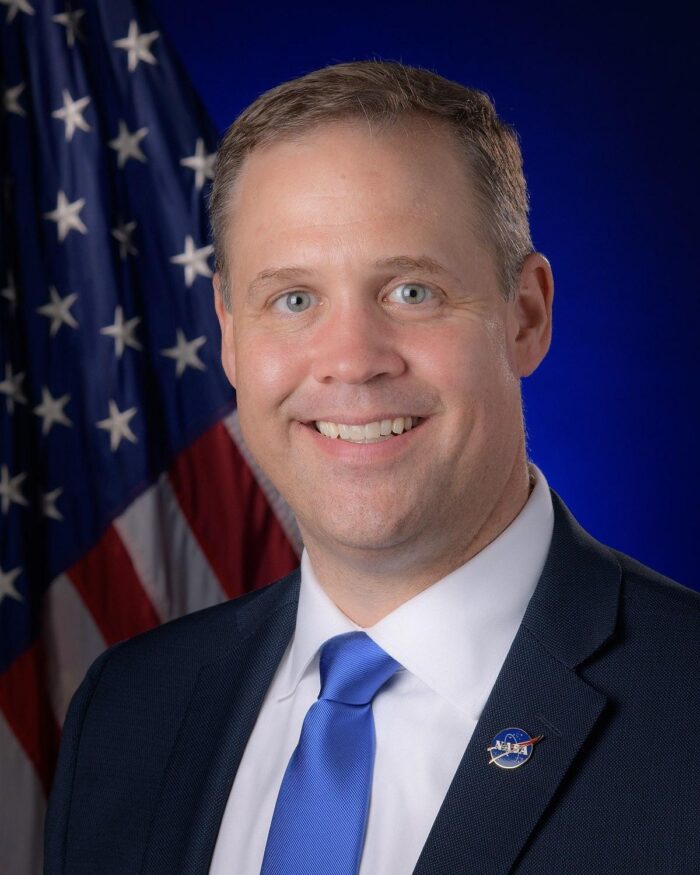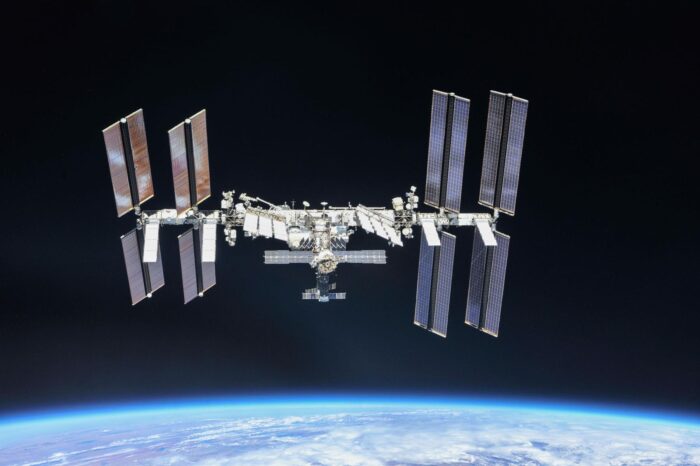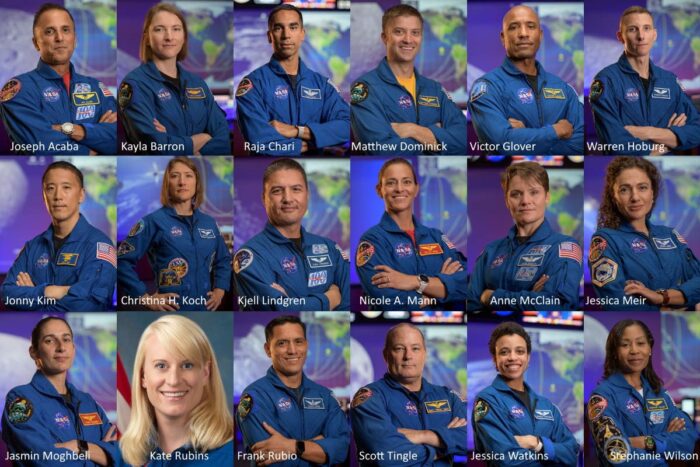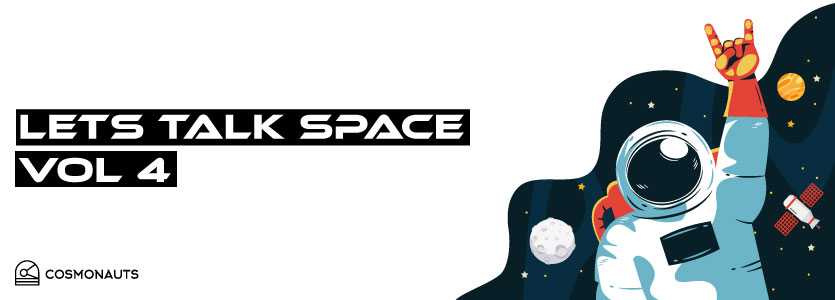Welcome to Let’s Talk Space, your monthly guide to the most exciting news articles (in our opinion) within the space industry. In this month’s episode, we discuss Jim Bridenstine, the importance of experiments at the ISS, Hayabusa2 and more!

1. Jim Bridenstine has announced that he will be leaving NASA under the administration of President-elect Biden. The NASA administrator has explained that it would be in the best interest of the agency to have an administrator that is in a close relationship with the president of the United States and most importantly that it is trusted by the administration.
Bridenstine is the 13th Administrator of NASA; he was first nominated by President Donald Trump and confirmed by the U.S. Senate. NASA’s ambitions to take the first woman and return men to the moon have been advanced under Jim’s administration. Under his leadership, the Artemis program, the human lunar exploration program aiming to return humankind to the surface of the Moon by 2024, was launched. To achieve this goal, NASA is developing the Orion crew capsule and the most powerful rocket ever built, the Space Launch System.
Jim Bridenstine has led NASA through some very turbulent times; the political uncertainty brought in by the Trump administration and a global pandemic that threaten to delay the bold and ambitious plans that NASA had for the upcoming years. However, it is hard to forget the moment when the world watched as SpaceX Falcon 9 launched Mr Behnken and Mr Hurley “the space dads” into orbit. The first time that humans had been taken into orbit by a private company and the first time since 2011 that humans had been launched into orbit from U.S. soil. A memorable moment, in a time of crisis, that brought the whole space community, if not the entire world, to take a moment and admire the extraordinary work that can be done when humanity works together towards a goal.
Bridenstine’s genuine passion for space has won him over the support of space enthusiasts all over the world, and he has shown great efforts to ensure that this passion is extended beyond the space community.
Bridenstine is credited for leading the transition of NASA into a new methodology, he has supported the commercial sector like no other administrator and accepts that when possible the agency should consider all options to accomplish its objectives. His accomplishments are recognised above the hyperpartisan environment of his administration having gained support from both Republicans and Democrats alike.
Whilst his administration has not come through without criticism, it is safe to say that Jim Bridenstine will be leaving the Agency better than he found it.
To learn more about Jim Bridenstine’s work, click here.
2. Experiments performed in low-Earth Orbit are of high importance not only for the future of space exploration but also here on Earth. By being the only laboratory for long-duration microgravity research, the ISS holds conditions for research that cannot be found anywhere else.
Since November 2000, when the ISS was first inaugurated, astronauts on board the ISS have conducted almost 3,000 scientific experiments, helping bring light to some of the biggest mysteries in science.

The experiments range from the discovery of the fifth state of matter, Bose-Einstein condensate, the study of antimatter and dark matter with the Alpha Magnetic Spectrometer and a study in the possibility of 3-D printing human organs in microgravity. (In January it was announced that The 3D BioFabrication Facility had successfully printed a large volume of human heart cells aboard the ISS).
Microgravity also allows for drug development and research, and for this reason, the first experiments in space for COVID-19 drug research will be taking place in the ISS. Remdesivir is currently considered the most promising drug for treating COVID-19. InnoStudio will be launching samples of remdesivir-SBECD to the ISS in December 2020. The study will allow for a better understanding of the mechanism of remdesivir-SBECD formulation.
Every year, NASA publishes a book called Spinoff, in which it outlines commercial products that incorporate NASA’s technology or expertise that benefit different areas here on Earth. To read this year’s edition of Spinoff, click here.
To learn more about some of the experiments that have taken place in the ISS, click here.
To learn more about InnoStudio’s study, click here.

3. Six years ago Japan’s Space Agency embarked on a mission to return samples from an asteroid to Earth. The Hayabusa2 surveyed the asteroid Ryugu for a year and a half and collected samples. It departed the asteroid in November 2019 and returned the collected samples to Earth in December 2020.
Asteroid Ryugu is a primitive carbonaceous near-Earth asteroid. Asteroids such as Ryugu are thought to preserve the most pristine, untainted materials in the Solar System.
Hayabusa2 also carried four small rovers which were deployed gradually into the surface of the asteroid. The information gathered by the rovers was meant to provide context information for the collected samples. One of the rovers even provided the first photograph taken from the surface of an asteroid (as seen above).
In December 2020, the mission concluded with a successful landing of the capsule containing the samples from Ryugu, in South Australia. The Space Agency has announced on the 14th December, that after opening one of the three chambers of the re-entry capsule, they were greeted by a sample of small pebbles and dust particles from Ryugu. It is also believed that gas was collected from the asteroid, making it the first sample of gas returned from deep space. However, this is not the end of Hayabusa2 journey, after dropping off the samples, the spacecraft shifted its course to avoid a collision with Earth and will travel to another asteroid called KY26, arriving in 2031.
To learn more about Hayabusa2’s journey, click here.
4. Relativity Space is breaking the mould with the development of its rocket Terran 1, which is currently being built with the use of multiple 3D-Printers that have been created specifically for this project, by Relativity Space.

Terran 1 rocket only has 730 individual parts (around 100 times less than a typical rocket) and is set to have approximately 95% of its parts 3D-printed.
Relativity plans to simplify the process of developing rockets and eventually be able to turn raw material into a rocket in under 60 days whilst being able to improve its designs continually.
In November 2020, it announced the closure of its latest round of investment, having raised $500 million during Series D putting Relativity’s valuation at $2.3 billion. This new valuation has made Relativity Space the second most valuable private space company in the world after SpaceX.
Multiple rocket developers are using additive manufacturing; however, it is currently used to a limited extent. With the launch of its 3D-printed Terran -1 Relativity Space might also be launching the rocket factory of the future.
To learn more about Relativity Space, click here.

5. Astroscale has raised $51 million; this will make Astroscale the most funded satellite servicing and logistics company in the world, according to Nobu Okada, Astroscale’s CEO. This recent investment highlights the industry’s focus on dealing with the growing space debris issue. Astroscale is currently developing cost-effective methods of servicing satellites in orbit and for removing old spacecraft and debris. According to Astroscale, the market for orbital satellite servicing is estimated to grow more than $4 billion in annual revenue by 2028. The company is estimated to launch its first mission demonstrating its technology (ELSA-d) by the end of the year.
To learn more about Astroscale click here.
Did you know??

NASA has named the astronauts that will be part of the Artemis Team; these astronauts will have a chance of becoming the first woman and next man to walk on the lunar surface. The astronauts selected are from NASA’s corps and have a wide range of expertise ranging from geology to physiology. The Artemis Team includes some very familiar faces such as Christina Hammock Koch and Jessica Meir, who broke the news in October 2019 by performing the first All-Female Spacewalk. International partner astronauts will likely join the team. NASA is yet to announce the flight assignment for the astronauts.
To learn more about the 18 members of the Artemis Team, click here.
Follow us on social media
Categorised in: Space Tech

